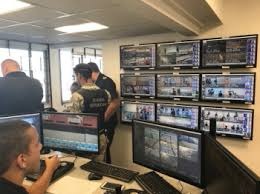
Facial recognition is a very fashionable technology following the launch of the new Iphone X. What many people may not know is that its application goes far beyond a simple access control function and can be used to identify people moving in a crowd. This technology began to be used in 2017 in the three most important stadiums in Uruguay. Its use is contributing to the identification of unauthorised persons when accessing football matches.
The implementation of facial recognition in Uruguayan football was promoted by the Ministry of the Interior and could be achieved thanks to the efforts of the Uruguayan Football Association (AUF) and its two most important clubs. The execution of the project was granted through a public tender to the company H&O Tecnología (DDBA Ltda.), which selected Herta’s facial recognition technology, and whose results in the preliminary live tests were the best among all the participants. One of the leading VMS platforms in the market, Wavestore, was integrated for the video management.
At present, the three most important stadiums in the country have Herta facial recognition systems, all of them supplied by DDBA. These stadiums are: Centenario Stadium, Great Central Park (the stadium of the National Football Club) and Champion of the Century (the stadium of the Athletic Club Peñarol). The first to enter into operation was the Centenario stadium, which inaugurated this device on April 1, 2017. Nowadays, dozens of cameras protect fans and watch over security actively and very effectively. If an alert is generated, the information is sent in real time to the devices of the police responsible for the system to prevent the access of unauthorised persons. With the aim of providing coverage to the rest of the stadiums, a system of portable facial identification was also implemented, which is transported to the scenarios in which other games are played.
According to Javier Rodríguez Saeta, CEO of Herta, “Uruguay is a pioneer in the world in the use of facial recognition technology for the identification of unwanted persons, contributing in this way to greatly increase the safety in first magnitude sporting events”. According to Germán Ruiz, partner of DDBA, “these tools have contributed in a formidable way to significantly reduce the episodes of violence in sporting events, and it is a path that other Latin American countries will be following in the short term.” Nowadays it can be confirmed that, thanks to the use of facial recognition, the eradication of violence in Uruguayan football is, fortunately, closer and closer.











